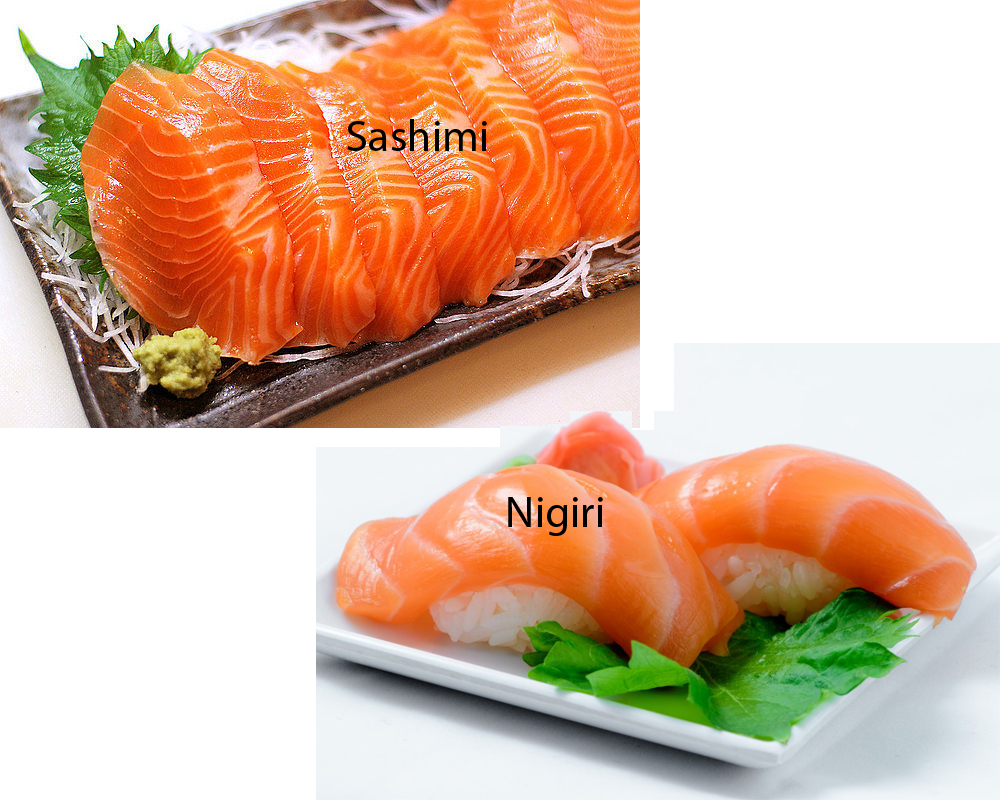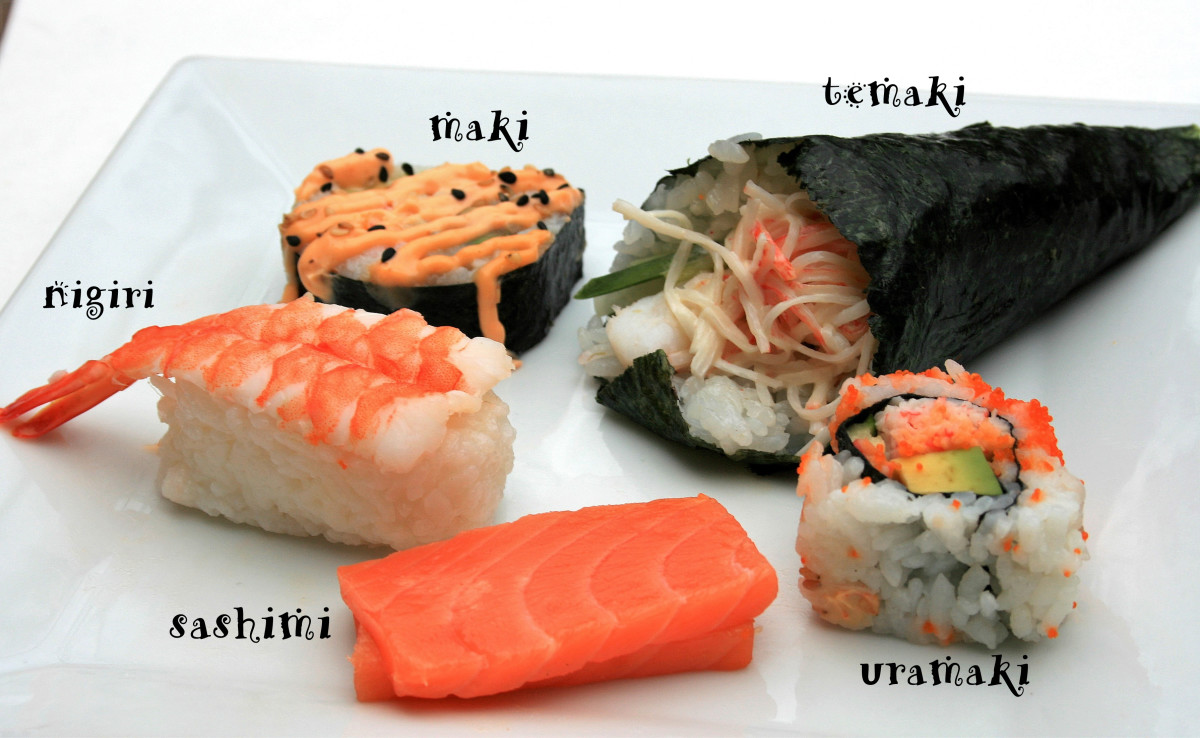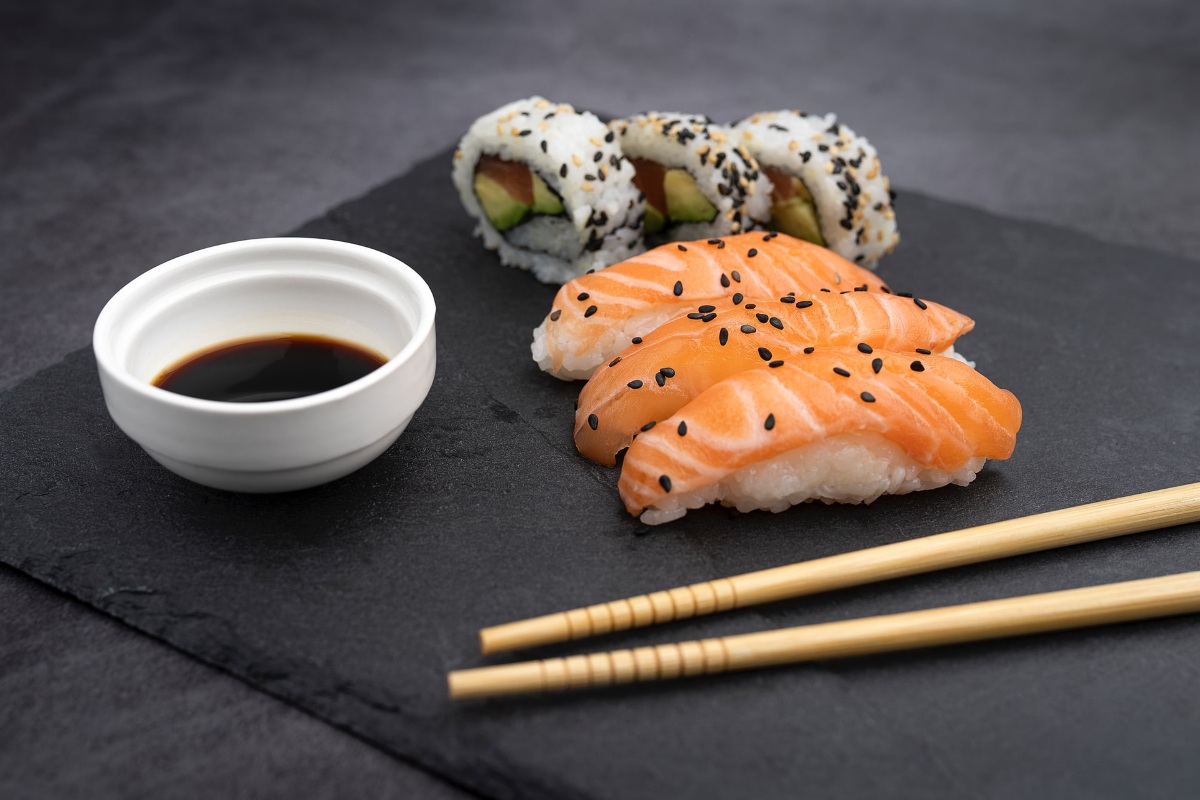
Sushi Vs. Sashimi Vs. Nigiri Vs. Maki What's The Difference? Sushi Fish, Nigiri
Nigiri (pronounced as nuh-gee-ree) is only one of the many different types of sushi, a popular Japanese dish that consists of cooked short-grain rice and a piece of protein. Usually, the protein used is fish. However, contrary to popular belief, sushi doesn't only need to be made of fish, like this vegan rendition of raw zucchini sushi rolls.

Nigiri vs Sashimi What’s the Difference? News Headlines
Nigiri is a specific type of sushi consisting of a slice of raw fish over pressed vinegared rice. Sashimi refers to just slices of very fresh fish or meat served raw, often over a bed of shredded daikon radish. Contrary to popular belief, sashimi is not sushi, even though you will always find sashimi on the menu at all sushi places.

Sushi Vs. Sashimi Vs. Nigiri Vs. Maki What's The Difference?
Food > Food Culture Nigiri vs Sashimi vs Maki: Definitions and Differences update:August 26, 2018 What are the differences between nigiri, sashimi and maki? Now sushi has become famous and popular worldwide, and sushi restaurants can be found almost any places in the world.

Diferencias entre Sushi, Nigiri, Sashimi y Maki. Recetas 🍣
Maki vs. temaki. The difference between maki and temaki is the shape and preparation. Maki sushi is rolled into a circular tube using a bamboo mat and sliced into bite-sized pieces, while temaki is hand-rolled into a cone shape and eaten as one piece. 9. Chirashi (chirashizushi) Category: sushi bowl

Types of Sushi Maki, Nigiri, Sashimi, Temaki & Gunkan Sushi, Sashimi sushi, Nigiri sushi
In fact, nigiri is a type of sushi. With nigiri vs sushi, the only difference is the shape and how it's made. In a sushi restaurant, sushi could refer to any dish made with vinegared rice, vegetables, fish, pickled ginger, and soy sauce. Sushi menus could include anything from sushi rolls to chirashi.

Sushi Vs. Sashimi Vs. Nigiri Vs. Maki What's The Difference? Sushi recipes easy, Homemade
Nigiri and sashimi are both staples of traditional Japanese cuisine. However, it's important to understand the distinction between the two. Nigiri uses rice, and is technically a type of sushi, while nigiri eschews rice, and can be made of fish or a different type of meat. It's also not technically sushi - though it's still served at.

Maki vs Nigiri
In Japanese, nigiri translates to "two fingers," which refers to the size of the rice portion. What is sashimi? You'll see a sashimi section on most sushi menus, but surprise! This actually isn't sushi at all.

Nigiri Vs Sashimi The Real Differences Tastessence
Sushi Vs. Sashimi Vs. Nigiri Vs. Maki: What's The Difference? Many people enjoy going out for sushi, but very few of us have an understanding of the vast array of items on the menu at a Japanese restaurant. The world of sushi can be an intimidating one, with words like sashimi, nigiri, and maki.

Sashimi vs Nigiri
Nigiri is a type of sushi which has a sliced raw/cooked fish atop a mound of one-bite size vinegary rice, typically a pinch of wasabi put between them. Ingredients on the rice are not necessarily fish; some nigiri has pickled vegetables, an egg omelet, or cooked meat.

Sushi Vs. Sashimi Vs. Nigiri Vs. Maki What's The Difference?
The two most popular types of sushi are Nigiri Maki Table of Content show Differences Between Sashimi vs Sushi Sashimi does not have the rice component that is compulsory in sushi. Sushi can also be made from raw fish however, sashimi uses more expensive and highly-prized raw seafood which makes the dish more unique.

Sushi Vs Sashimi Vs Nigiri Sushi Vs Sashimi Vs Nigiri Vs Maki What S The Difference However
1. Sashimi Technically, sashimi isn't a type of sushi because it contains no rice. We're including it in our sushi guide because it plays an important role in Japanese cuisine. Sashimi is thinly sliced fish or meat, often served raw. It can be any type of meat, but fish and seafood are the most common types of sashimi.

The Different Kinds of Sushi Types, Names, and Photos Delishably
Key Ingredients and Preparation Fish and Seafood Nigiri and sashimi are primarily distinguished by the selection and preparation of their fish and seafood components. Both dishes use high-quality fish like salmon, tuna, yellowtail, mackerel, and eel, as well as other seafood items such as shrimp, octopus, and tai.

Nigiri vs Sashimi vs Maki How Exactly Are They Different?
Step 5: Assemble the Nigiri: Place the fish, egg, or veggie slice on the root of your fingers. Then take a pea-sized portion of wasabi, and spread it in the middle of the slice. Place the rolled sushi rice onto the topping slice, and bend your fingers to cover both the topping and rice together.

Nigiri Vs Sashimi What Is The Difference in Nutrition and Ingredients? Fitibility
The major difference of Nigiri vs. Maki is that Nigiri features the seaweed inside sushi rolls and Maki features the seaweed outside sushi rolls. 4. What's The Difference Between Nigiri and Sashimi? Let's take a look at the differences between Nigiri vs. Sashimi and Nigiri vs. Maki. Ingredients Nigiri is made of rice and fish.

Nigiri vs Musubi vs Maki vs Sushi vs Sashimi What is the difference? Pickled Plum Japanese
The History of Sushi Understanding Nigiri Exploring Sashimi Nigiri vs Sashimi: The Key Differences The Health Perspective: Nutritional Benefits and Risks Exploring the Science Behind Nigiri and Sashimi The Cultural Significance of Nigiri and Sashimi The Culinary Experience: Nigiri and Sashimi Around the World Conclusion The History of Sushi

Nigiri vs Sashimi What's the Difference?
The Way of Eating. Nigiri is mostly eaten with hands or a chopstick. It's commonly held in the rice part of the sushi not to ruin the fish topping. Sashimi is eaten solely with chopsticks. Since the dish comprises thinly sliced fish and meat, using other utensils or hands to eat sashimi can ruin the food.